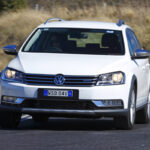
Hyundai Accent is a familiar sight in Australia since it was launching here in June 2000. It’s aimed at those looking for sensible, affordable no-frills transport.
The first Accents were on the ordinary side by today’s standards, build quality could have been better and handling was on the soft side. They improved with each new generation and Accent really came of age in July 2011 when the fourth generation arrived, with real improvements in build quality.
Even more importantly it has Australian developed suspension tuning.
Hyundai Accent are sold in hatchback and sedan bodies, with the sedan having an impressively large boot for car in this class.
Accent is solidly built and older ones that have been looked after properly are worth considering if your budget is tight. But make sure to have a professional inspection and, ideally, be able to do a fair bit of your own repair work.
There’s good interior room in this small-medium Korean and buyers with pre-teen children can easily use the Accent as a family car. The boot is roomy and easy to use and has a good shape that’s simple to load.

Power comes from a naturally-aspirated petrol engine of 1.4, 1.5 or 1.6 litres, with the 1.6 being offered in two stages of tune, with a more powerful unit in the Sport model.
There’s also a 1.6-litre turbo-diesel which costs more but uses less fuel. This sort of engine has never been popular in cars in Australia, but is well worth checking out if you’re doing a lot of driving.
On trips on the open road you can get fuel consumption under five litres per hundred without having to put any special effort into your driving technique.
There’s a mix of four and six-cylinder automatic and manual transmissions. Most of the autos are conventional torque convertor units, but there’s a CVT unit in the 1.4 engine.

Hyundai is a well established as part of the Australian automotive scene. The dealer network is large and widespread, though as is often the way in a car in this class, representation in the bush can be on the sparse side.
We have heard of no real complaints about the cost of servicing or spare parts.
The Accent is a simple design and has good underbonnet space, so it’s quite easy to work on. A lot of routine stuff can be done by a good home handyperson.
But always leave safety related items to the professional. Having a workshop manual on hand is always a smart move.
Insurance charges are moderate and there doesn’t appear to be a great deal of difference between companies as to the premiums they charge. Shop around but, as always, make sure you are doing a full apples-with-apples comparison before making your final choice.
WHAT TO LOOK FOR
Hyundai Accents generally hold up well on rough Australian roads, but listen for squeaks and rattles from the body. Also for trim movement inside the cabin during your test drive.
We’ve seen a couple of Accents with rust in their bodies after they’ve been poorly repaired after crashes.
Look over the interior, including the boot, for signs of rough usage.
Do an engine check for easy starting and smooth idling. Where possible this should be done with the engine cold after it’s been sitting overnight.
While travelling at a very low speed turn the steering wheel all the way from one side to the other and listen for clunking noises near the front wheels. These probably mean the universal joints are worn.
Feel for a manual gearbox that baulks during fast gearchanges, especially during the three-two downchange may be on its way out.
An automatic transmission that holds onto gears to long, or skips up and down unnecessarily, may be due for an overhaul. If in doubt, get a quote before settling on purchase as it could make a big hole in your budget.
HOW MUCH?
Expect to pay from $3000 to $6000 for a 2011 Hyundai accent Premium; $5000 to $8000 for a 2012 Active; $6000 to $9500 for a 2014 SR; $7000 to $11,000 for a 2015 Elite or a 2016 Active; $8000 to $13,000 for a 2017 Active; and $9000 to $14,000 for a 2017 Sport
CAR BUYING TIP
Always search hard to find the best car at the best price – and do the same with finance and insurance.
RECALLS: To browse recalls on all vehicles go to the ACCC at: www.productsafety.gov.au/products/transport/cars/











